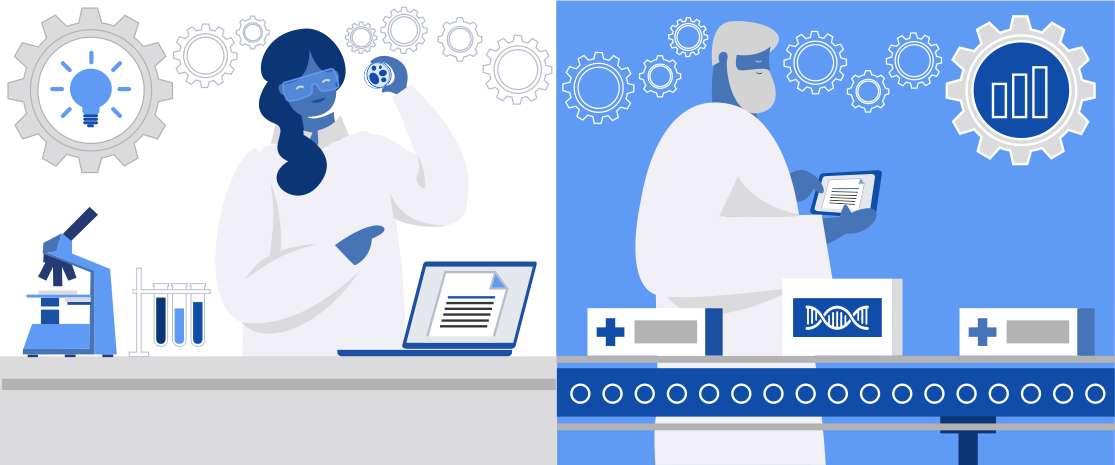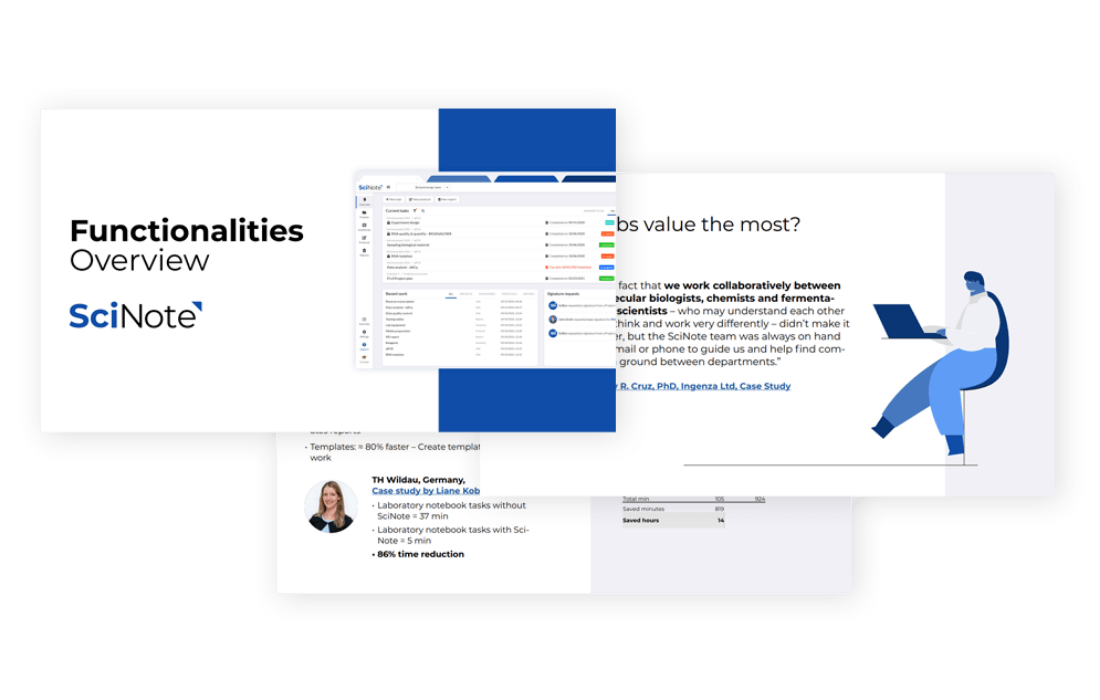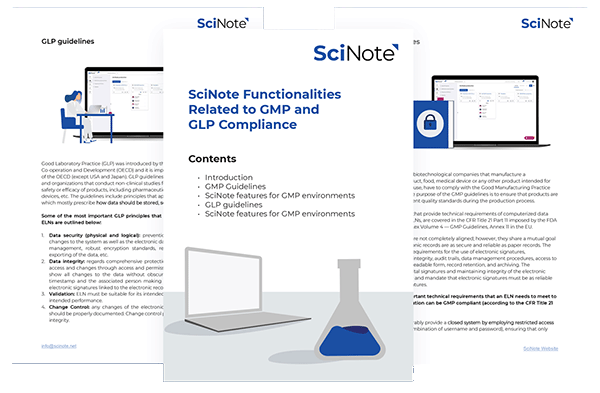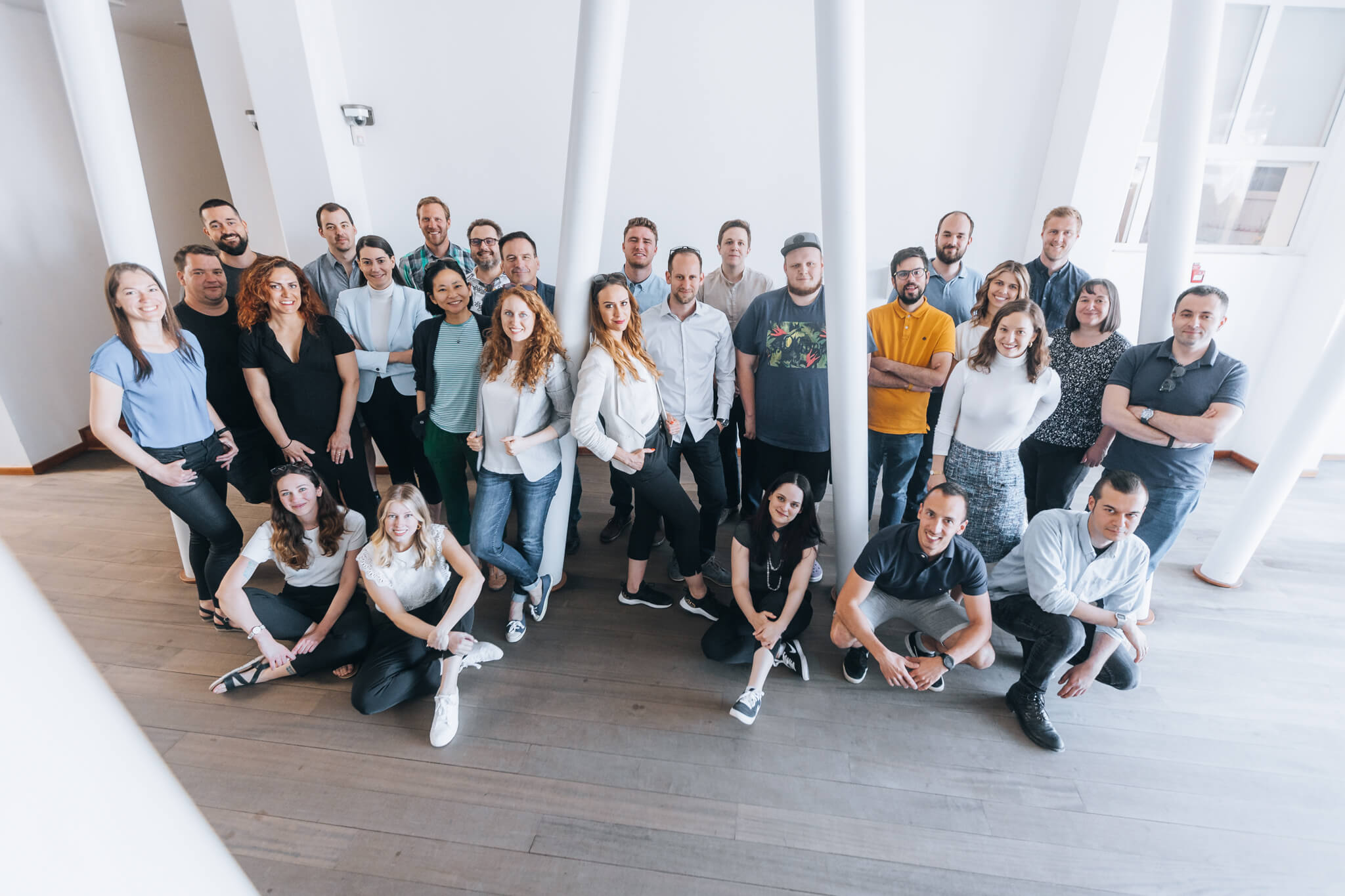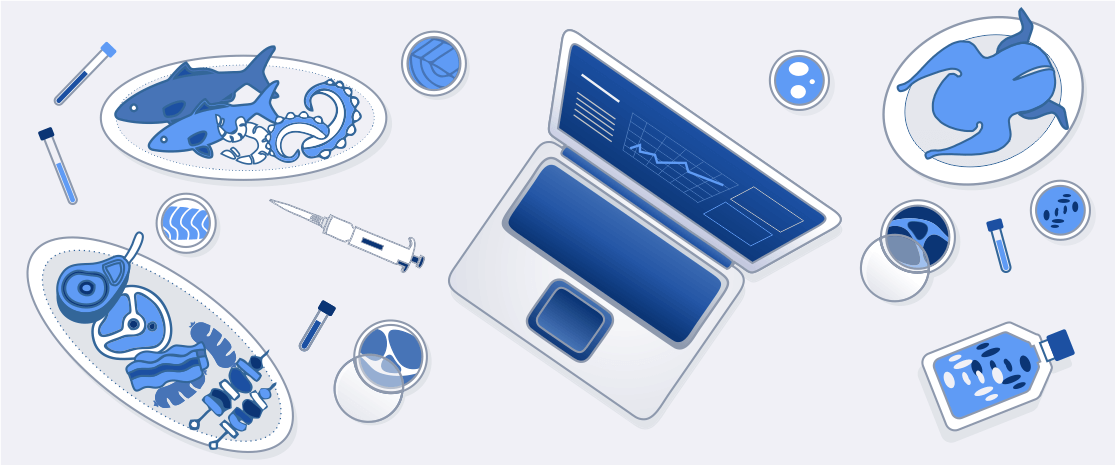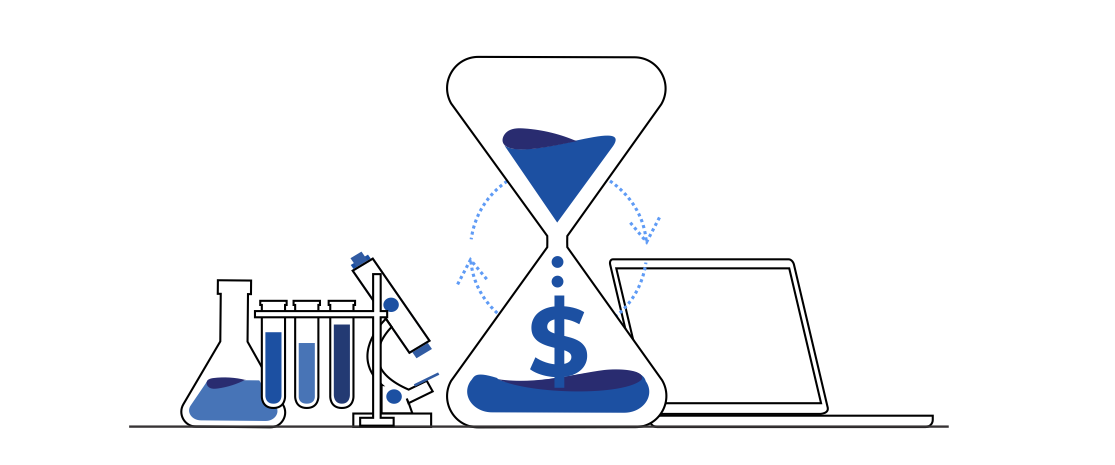Bridging the gap: how digitalization can bolster your technology transfer position
Technology transfer is an important process that a company or a lab will need to consider when maximizing its impact. Yet, it is not as straightforward as simply following the standard operating procedures. In the blog post, we will discuss the core challenge of technology transfer – reproducibility – and why you should invest in digitalization now to address this challenge.
What is technology transfer?
Technology transfer can be broadly defined as the process of passing on existing technology developed by one entity to another, with the expectation that technology received can be adapted.
There are several scenarios during which you will need to consider technology transfer. The most common one is when a company is scaling up its development and production, either internally between different units or through outsourcing to external contractors (e.g., CDMO or CRO). Technology transfer is also necessary when a company licenses its technology to another company, or when a lab establishes a collaborative relationship with an external partner [1].
A related, broader process is knowledge transfer [2], where the emphasis is on information and expertise (“knowledge”) being passed on. In the academic context, researchers could be required to conduct knowledge transfer activities, such as sharing research results or work with organizations that could apply such knowledge, by their funding agencies to maximize the impact of their publicly funded research.
Beyond academic research, knowledge transfer has an important role within any organization when information and expertise need to be passed on from one individual to another. A clear example would be for a staff member to pass on information to its successor [3].
The importance of technology transfer
WHO defines successful knowledge transfer [4] as “if there is documented evidence that the RU [(receiving unit)] can routinely reproduce the transferred product, process or method against a predefined set of specifications as agreed with the SU [(sending unit)].”
Technology transfer can be a crucial step when a company is looking to increase its impact and to generate financial benefits. The technology transfer process could tie closely to the expansion, sustainability, funding, and even the survival of the company or the research lab. Needless to say, any delay or failure to transfer technology could have dire consequences.
The core challenge of technology transfer – reproducibility
“Any transfer carries inherent business, regulatory, product quality, and technical risks. What is being transferred is not a physical asset, but an ability to create a product—this ability (or knowledge) is often challenging to define and specify.”
– L. Pinto, “Addressing the Key Pitfalls Hindering Technology Transfer Success [5],” BioPharm International 35 (11) 36–40 (2022).
Technology transfer depends on reproducibility. A technology is not transferable or scalable if you are not even able to reproduce it to start with. Hence, a core challenge of knowledge transfer is to be able to properly, efficiently, and thoroughly pass on the technology (and relevant documentation and expertise) so that the technology recipient can reproduce the technology and make use of it. Yet, this is extremely difficult.
Think of what’s involved when a technology is developed. Standard operating procedures (SOPs) are created, and you technically could expect that by following the SOPs, you will get to reproduce the technology. This is not always the case, though. Consider other contributing factors that could affect reproducibility. Here are some examples:
- Is the same type of equipment used? If so, are there minute differences between two pieces of equipment manufactured at different times?
- What reagents or raw materials are used? Do different batches or lots have different reactivity?
- Were there changes made to the SOPs that are not explained or recorded?
- Are the same quality control processes in place for both receiving and sending units?
While there could be many elements influencing reproducibility – such as equipment, raw materials, and other factors – a lot of this comes down to how well the development of the technology was documented in the first place [6]. Without proper documentation of what really happened, troubleshooting a broken SOP can feel like finding the needle in a haystack.
Learn more about SciNote ELN and how it can contribute to your work management
Download SciNote functionalities overview PDF
Download functionalitiesLack of documentation means trouble
In technology transfer, lack of documentation could result in significant delays. It could even mean lost technology if reproducibility can’t be achieved eventually. Documentation alone isn’t enough – going one step further, data must be well managed to make sure info can be quickly accessed and shared in collaborative scenarios.
Without proper documentation and data management, especially on the sending unit side, you will certainly run into the following situations during your technology transfer process.
Not enough information given from the SU to the RU. If the team developing the original technology or SOP didn’t pass on all the documentations, or didn’t include necessary details, context or metadata, there could be a major gap in ensuring the technology is reproduceable. To this end, the ability for SU to locate all relevant records quickly and to pass them on could be critical to the success of the project.
Information gap within the SU. Companies sometimes rely on staff members as their institutional memory. Yet, staff turnover could happen for a variety of reasons. If a key staff member leaves the company without transferring the knowledge and expertise, others in the company might not be able to fill the gap in reproducing the technology. This similarly will lead to incomplete information given to the RU. This could also happen in academic labs when a graduate student or post doc leaves the lab and is no longer reachable.
Another possible cause for the information gap is due to how original data are being stored at SU. For example, if data are stored in paper notebooks or some obscure media, it could be difficult to locate the records. A study in Current Biology showed that the availability of research data could drop by 17% per year due to inaccessibility of data [7]. As mentioned in the study,
“There was a continuum of author responses between the data being reported lost and being stored on inaccessible media…Responses included authors being sure that the data were lost (e.g., on a stolen computer) or thinking that they might be stored in some distant location (e.g., their parent’s attic) to authors having some degree of certainty that the data are on a Zip or floppy disk in their possession but no longer having the appropriate hardware to access it.”
Lack of data integrity practices. This means that the original data was not collected following data integrity practices ALOCA – attributable, legible, contemporaneous, original, and accurate [8]. As such, the data is no longer dependable, rendering the technology difficult to transfer successfully. This also poses major risks for companies whose work is expected to be compliant with regulatory requirements such as FDA 21 CFR Part 11 or GxP.
Get an overview of how to implement SciNote in a regulated environment
Download SciNote GMP and GLP guidelines
Download GMP and GLP guidelinesStrengthen your technology transfer position through digitalization
Many of the issues mentioned can be addressed by the recent innovation in lab digitalization and digital data management. A major advantage of digital platforms for documentation and data management is the automation of data integrity practices, such as logging activities, creating an audit trail, or backing up data. Technology such as API has allowed integration of data management into the lab’s ecosystem of software and equipment and streamlined data collection to minimize human errors. These strengthen the integrity of your technology transfer documentation and ensure that the information received is dependable.
Digitalization also makes it much easier to trace data to original sources, and cross-reference between different documentations. For example, it is now possible to trace results from an experiment to its protocol, to changes made during the experiment, to the reagents used even down to its batch number – all within a digital system as long as the information is recorded.
To improve the level of documentation, templates and workflows can be easily created. This improves the consistency of documentation by lab members, and also makes it easier to onboard new team members. Expertise and institutional knowledge can also now be made available to other team members digitally to simplify the knowledge transfer process.
On the collaboration front, as the technology development process is documented in a digital format, it is much easier and faster to locate all relevant documentation and data, and to share them with partners and collaborators. Some data management platforms come with communication features such as tagging, comments, or chats, allowing for immediate response to address issues.
Here is how Ingenza, a biotechnology company specializing in the design, development and manufacture of diverse, high-value industrial products and therapeutic-proteins, scale up their processes by incorporating an electronic lab notebook into their data management practices (specifically to technology transfer starting at 29:34).
Why invest in digitalization now?
Investing in digitalization is investing in your future. While technology transfer isn’t necessarily the first thing on your mind when you start a company or a research program, it is something worth considering early on given it is importance to the company and the lab. It might be too late by the time you realize that your research could have a much greater impact or could generate significant financial benefits. It’s no surprise that 70% of the life sciences industry leaders who are scaling or have scaled their digital efforts in the labs see the expected or exceeding expected return on investment [9].
To prepare your work for the future, consider the challenges of technology transfer you will face, and start your digitalization journey now.
Schedule a Q&A session with us to discover all the features that SciNote ELN can offer
Book your informative meeting now and avoid missing out on crucial information.
Book a meetingReferences
- 5 reasons why collaboration is important in research. Labiotech.eu. https://www.labiotech.eu/expert-advice/importance-of-research-collaboration/. Accessed on March 24, 2023.
- What is knowledge transfer? University of Cambridge. https://www.cam.ac.uk/research/news/what-is-knowledge-transfer. Accessed on March 24, 2023.
- Succession Planning: Best Practices for Knowledge Transfer. Lab Manager. https://www.labmanager.com/business-management/succession-planning-best-practices-for-knowledge-transfer-27460. Accessed on March 24, 2023.
- WHO guidelines on transfer of technology in pharmaceutical manufacturing. World Health Organization. https://extranet.who.int/pqweb/sites/default/files/documents/TRS_961_Annex7_2011.pdf. Accessed on March 24, 2023.
- L. Pinto, “Addressing the Key Pitfalls Hindering Technology Transfer Success,” BioPharm International 35 (11) 36–40 (2022). https://www.biopharminternational.com/view/curia-and-corning-collaborate-to-advance-biopharmaceutical-continuous-flow-development. Accessed on March 24, 0223.
- Best practices for a successful bioprocess technology transfer. Cytiva. https://www.cytivalifesciences.com/en/us/solutions/bioprocessing/knowledge-center/tech-transfer-best-practices. Accessed on March 24, 2023.
- Timothy H. Vines, et al. The Availability of Research Data Declines Rapidly with Article Age, Current Biology, Volume 24, Issue 1, 2014, Pages 94-97, https://doi.org/10.1016/j.cub.2013.11.014. Accessed on March 24, 2023.
- Data Integrity in your lab: The 6 steps you can take to avoid an FDA warning. SciNote. https://www.scinote.net/blog/data-integrity-in-your-lab-6-steps/. Accessed on March 24, 2023.
- Digital Transformation in the Lab: Bridging Analog Islands in a Digital Ocean. Accenture Life Sciences. https://www.accenture.com/_acnmedia/PDF-115/Accenture-Digital-Lab-Transformation.pdf. Accessed on March 24, 2023.
If you like this post also check out:
- 8 reasons why an electronic lab notebook enhances research reproducibility
- Technology Transfer: What Is It, and How Is It Done? Via Premier Consulting
- Best practices for a successful bioprocess technology transfer via Cytiva
- Three Best Practices When Outsourcing In A Life Science Company via Forbes
- Why Knowledge Transfer Is Important (With Definition) via Indeed
- Technology Transfer Challenges Between Academia and the Biotechnology Industry via Harvard University
